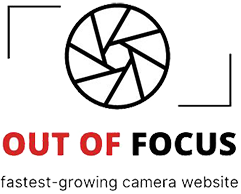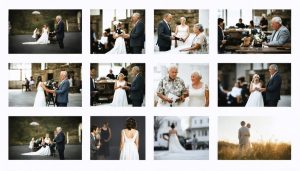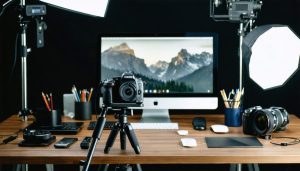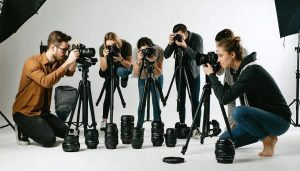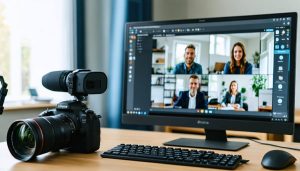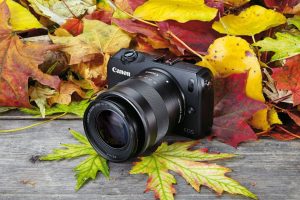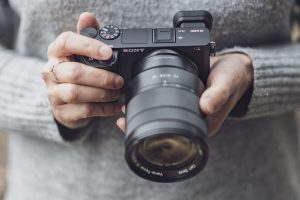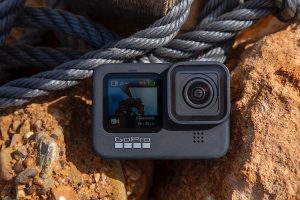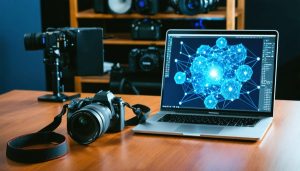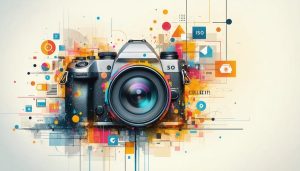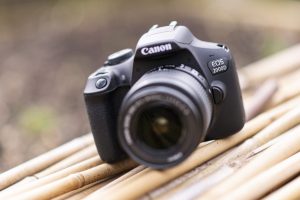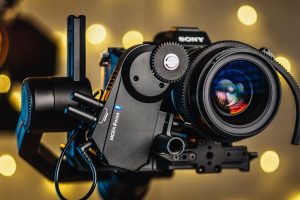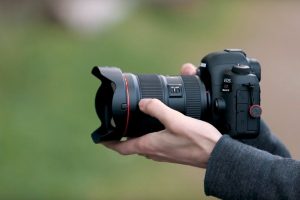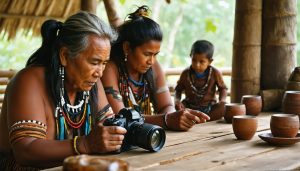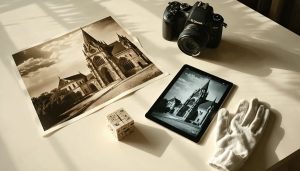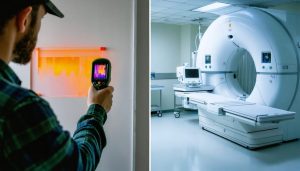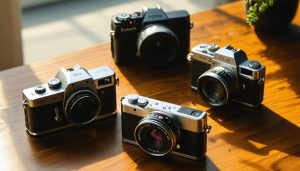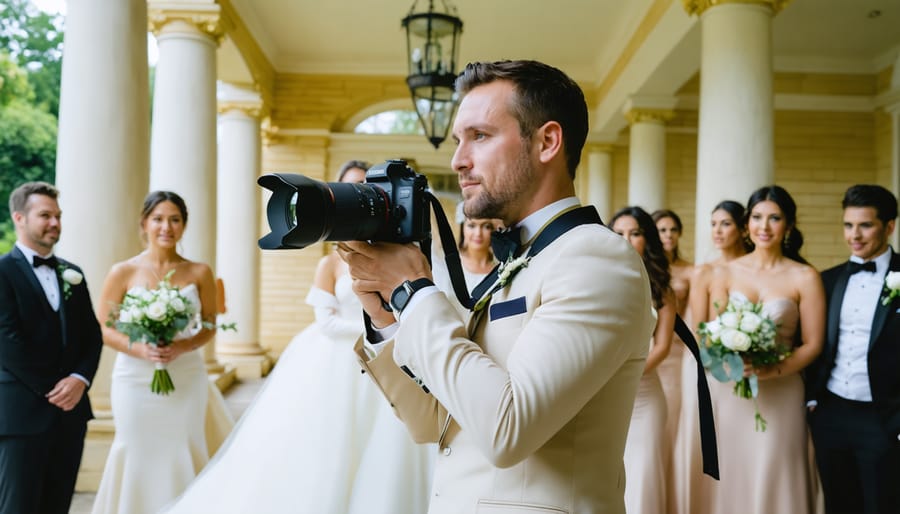
Mastering wedding photography demands more than just talent – it requires a meticulously curated collection of proven photography gear built for high-stakes performance. Every wedding photographer’s kit must prioritize redundancy, reliability, and rapid adaptation to unpredictable conditions. From dim church interiors to sun-drenched outdoor ceremonies, your equipment becomes your silent partner in capturing once-in-a-lifetime moments.
Professional wedding photography represents a significant investment, typically ranging from $5,000 to $15,000 in essential gear. This comprehensive guide breaks down the must-have equipment that consistently delivers results across hundreds of weddings – from primary and backup camera bodies to fast-aperture lenses, reliable flash systems, and bulletproof storage solutions. Whether you’re transitioning into wedding photography or upgrading your existing kit, we’ll focus on battle-tested tools that working professionals trust when failure isn’t an option.
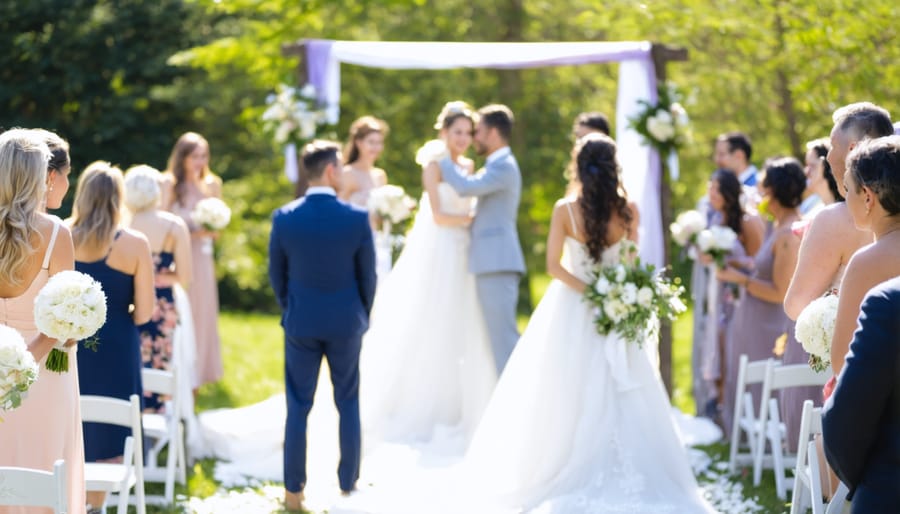
Essential Camera Bodies for Wedding Photography
Primary Camera Features That Matter
When selecting a camera for wedding photography, certain features become absolutely critical for professional performance. Weather sealing tops the list, as you’ll often shoot in unpredictable conditions, from misty garden ceremonies to sudden rain showers. A well-sealed camera body provides peace of mind and reliability when you need it most.
Battery life is another crucial consideration. Wedding days often stretch beyond 12 hours, and you need a camera that can keep up. Look for models offering at least 1,000 shots per charge, and always carry spare batteries. Many modern cameras now offer battery grips, which can effectively double your shooting capacity.
Silent shooting modes have become increasingly important, especially during intimate ceremony moments. The last thing you want is your camera’s shutter sound echoing through a quiet church. Modern mirrorless cameras excel in this area, with many offering completely silent electronic shutters that won’t disturb solemn moments.
Dual card slots are non-negotiable for professional wedding photography. This feature allows immediate backup of your images, protecting those irreplaceable moments. As you grow your photography business, clients will expect this level of security and professionalism.
Low-light performance is essential, as reception venues are often dimly lit. Look for cameras with good high-ISO performance and effective image stabilization. These features will help you capture sharp, clean images even in challenging lighting conditions without relying heavily on flash.
Backup Camera Considerations
Having a reliable backup camera system isn’t just good practice – it’s an absolute necessity for wedding photography. Your backup gear should be as capable as your primary equipment, ready to seamlessly step in at a moment’s notice. Think of it as insurance for those once-in-a-lifetime moments you can’t afford to miss.
When choosing a backup camera, aim for compatibility with your existing lenses and accessories. This approach not only saves money but also ensures you can quickly switch between bodies without changing your shooting style. Ideally, your backup should be the same model as your primary camera, or at least from the same manufacturer, to maintain consistent menu layouts and button placements.
Memory card slots are another crucial consideration. Dual-slot cameras are preferred for both primary and backup bodies, allowing for immediate backup of images during shooting. If budget constraints make this impossible, ensure at least your primary camera has dual slots.
Consider keeping your previous camera as a backup when upgrading your main body. This strategy provides a familiar backup option while maximizing your investment. Just ensure it’s still reliable and capable of delivering professional-quality results.
Store your backup equipment in an easily accessible part of your camera bag, and regularly test it to ensure everything works perfectly. Remember, a backup camera is only useful if it’s ready to perform when needed.
Must-Have Lenses for Wedding Coverage

Prime vs Zoom Debate
The prime versus zoom lens debate is a crucial consideration for wedding photographers, with each option offering distinct advantages. Prime lenses, with their fixed focal length, typically deliver superior image quality and perform exceptionally well in low-light conditions thanks to their wider maximum apertures. They’re perfect for intimate moments like ring exchanges or first looks, where that dreamy bokeh can create stunning portraits.
However, zoom lenses offer unmatched versatility, allowing you to quickly adapt to changing scenarios without physically moving – crucial during ceremonies where being discreet is paramount. While mastering new equipment takes time, most professional wedding photographers opt for a combination of both.
A recommended starter combination includes:
– 24-70mm f/2.8 zoom for ceremony coverage and group shots
– 70-200mm f/2.8 zoom for candid moments and ceremony shots from a distance
– 50mm f/1.8 or 85mm f/1.4 prime for portraits and detail shots
This combination provides optimal coverage while maintaining image quality across various shooting scenarios. Consider your shooting style and venue types when making your selection. For intimate indoor weddings, prime lenses might be your primary choice, while larger outdoor venues might benefit more from zoom versatility.
Remember that investing in quality glass is crucial – these lenses will likely outlast several camera bodies and contribute significantly to your signature style. Start with one quality zoom and one prime, then expand your collection as you develop your preferred shooting approach.
Specialty Lenses Worth The Investment
While your core lens kit forms the backbone of wedding photography, investing in specialty lenses can truly elevate your work and help you capture those unforgettable moments in unique ways. A macro lens, typically in the 100mm range, is essential for shooting stunning ring shots, intricate dress details, and delicate floral arrangements. The Canon 100mm f/2.8L IS USM or Nikon 105mm f/2.8G VR are excellent choices that deliver tack-sharp results.
Consider adding a ultra-wide-angle lens to your arsenal for dramatic architectural shots of venues, sweeping landscapes for outdoor ceremonies, and creative group photos in tight spaces. The 16-35mm range is particularly versatile, allowing you to capture both dramatic wide shots and more standard focal lengths when needed.
A tilt-shift lens, while expensive, can be a game-changer for creative photographers. It enables unique perspectives and selective focus effects that can’t be replicated in post-processing. The 45mm or 90mm variants are particularly useful for wedding photography, offering creative possibilities for ceremony and portrait shots.
Don’t overlook the potential of a quality fisheye lens for creative reception shots and unique perspectives of dance floor moments. While it shouldn’t be overused, a fisheye can provide playful, memorable images that clients love.
Remember that specialty lenses aren’t just about creative effects – they’re problem-solving tools. A super-telephoto lens like a 200-400mm can be invaluable for discrete ceremony coverage in venues with strict photographer position restrictions. When investing in specialty glass, prioritize lenses that align with your shooting style and common challenging scenarios you encounter.
Lighting Equipment That Never Fails
Flash Systems and Triggers
A reliable flash system is crucial for wedding photography, where lighting conditions can change dramatically throughout the day. Start with at least two professional-grade speedlights, like the Canon 600EX-RT or Nikon SB-910. These offer powerful output and advanced features for creative lighting setups. To improve your lighting skills, practice using both on and off-camera flash configurations.
Wireless triggers are essential for off-camera flash work. Popular options include the PocketWizard Plus IV, Godox X2T, or proprietary systems like Canon’s RT transmitters. Look for triggers with reliable range, multiple channels to avoid interference, and TTL compatibility for quick adjustments during fast-paced moments.
Always pack backup flash units and triggers. A common setup includes two primary speedlights and one backup, plus an extra set of triggers. Consider adding a compact LED continuous light for video segments or emergency situations. Remember to carry plenty of fresh batteries – rechargeable Eneloops are industry favorites for their reliability and cost-effectiveness.
For reception lighting, include light stands, modifiers like softboxes or bounce cards, and gels for color matching. Some photographers also keep a small video light in their bag for creative nighttime portraits or emergency backup lighting.

Natural Light Enhancement Tools
Natural light is a wedding photographer’s best friend, but sometimes it needs a little help to create that perfect shot. That’s where light enhancement tools come into play, serving as essential companions for capturing those magical moments in varying lighting conditions.
Reflectors are perhaps the most versatile and cost-effective tools in your arsenal. A 5-in-1 reflector kit typically includes white, silver, gold, black, and translucent surfaces, each serving a specific purpose. The silver surface adds punch to shadowy areas, while gold provides warm fill light that’s particularly flattering for sunset portraits. White offers soft, natural-looking fill light, and the translucent panel works beautifully as a diffuser to soften harsh sunlight.
Diffusers are game-changers during outdoor ceremonies and portrait sessions. Whether it’s a collapsible silk diffuser or a larger scrim, these tools help tame harsh midday sun and create even, flattering light across your subjects’ faces. Many photographers pair a diffuser with an assistant who can hold it at the optimal angle – a worthwhile investment for those critical shots.
For more subtle light modification, consider using bounce cards or small handheld reflectors. These can be particularly useful during getting-ready shots in hotel rooms or when working in tight spaces where larger reflectors might be impractical. Some photographers even carry white foam core boards, which are lightweight and effective for bouncing window light during indoor portraits.
Remember, the key to using these tools effectively is practice and understanding how different surfaces affect the quality and temperature of light. The best results often come from subtle modifications rather than dramatic changes.
Support Gear and Accessories
Memory Cards and Storage Solutions
When it comes to wedding photography, your memory card strategy is just as crucial as your camera choice. Always pack multiple high-capacity cards – a minimum of 64GB each, with at least four cards for a typical wedding. Opt for cards with fast write speeds (95MB/s or higher) to handle rapid shots and high-resolution RAW files without buffering.
Never compromise on card quality – stick to reputable brands like SanDisk Extreme Pro or Lexar Professional. The small price difference is worth the reliability and peace of mind. During weddings, use a dual-card setup if your camera allows it, recording simultaneously to both cards for instant backup.
For storage solutions, implement a three-tier backup system: primary storage on your computer’s SSD, a local external hard drive, and cloud storage. Transfer files immediately after the wedding, before leaving the venue if possible. Keep cards untouched until you’ve confirmed multiple backups – this has saved countless photographers from disaster.
Consider investing in a portable backup device for on-location redundancy. These devices can copy your cards directly without a computer, providing extra security during long wedding days.
Bags and Transportation
Transporting your wedding photography gear safely and efficiently is crucial for a smooth shoot day. A well-organized camera bag system helps you access equipment quickly while protecting your valuable investments. Consider a rolling case as your main bag, which saves your back during long wedding days and allows easy navigation through venues. The Think Tank Airport series and Pelican cases are industry favorites, offering excellent protection and meeting most airline carry-on requirements.
For moving around during the ceremony and reception, a shoulder bag or backpack provides quick access to essential gear. Look for bags with modular dividers, weather protection, and dedicated laptop compartments for on-site editing. Many photographers opt for a dual-system approach: keeping backup gear in the rolling case while carrying immediate-need equipment in a smaller bag.
Don’t forget about comfort features like padded straps, reinforced handles, and weight distribution systems. Your bag should also have extra space for emergency supplies, memory cards, batteries, and personal items. Consider keeping a separate, smaller bag just for flash units and light stands, making it easier to grab what you need for specific shooting scenarios.

Emergency Kit Essentials
Every wedding photographer needs a well-stocked emergency kit to handle unexpected situations that could otherwise derail a shoot. Here’s what your kit should contain:
First, pack basic camera repair and maintenance items: lens cleaning supplies (microfiber cloths, cleaning solution, and air blower), spare batteries for all devices, empty memory cards, and a small toolkit with screwdrivers. Include gaffer tape – it’s invaluable for quick fixes and securing loose equipment.
For lighting emergencies, carry a backup flash unit and spare sync cables. A small LED continuous light can be a lifesaver during dark reception venues or if your flash fails. Don’t forget extra batteries for these as well.
Personal comfort and appearance items are crucial: band-aids, pain relievers, safety pins, hair ties, and a small sewing kit. Include a stain removal pen and wet wipes – you might need them for yourself or to help the wedding party with minor emergencies.
Weather-related items are essential: a few clear plastic bags to protect gear from rain, a small umbrella, and lens cloths for humidity. During summer weddings, include cooling towels and portable fans.
Keep your emergency kit in a compact, easily accessible bag, and regularly check and replace items. Remember to add business cards and a spare contract copy – you never know when networking opportunities might arise, even during emergencies.
Building a comprehensive wedding photography kit requires careful consideration and strategic investment. Remember that reliability and redundancy are paramount – always carry backup cameras, multiple lenses, and spare batteries. Start with essential gear like a full-frame camera, versatile zoom lenses, and a powerful flash system, then gradually expand based on your shooting style and client needs. Don’t forget the often-overlooked items like memory cards, cleaning supplies, and comfortable carrying solutions. While high-end equipment is valuable, your skill and experience matter most. Consider seeking professional feedback on your work as you develop your kit and technique. Remember that the best equipment is what you can rely on consistently while maintaining your creative vision and delivering exceptional results to your clients. Start with quality fundamentals, practice extensively with your gear, and expand thoughtfully as your business grows.
